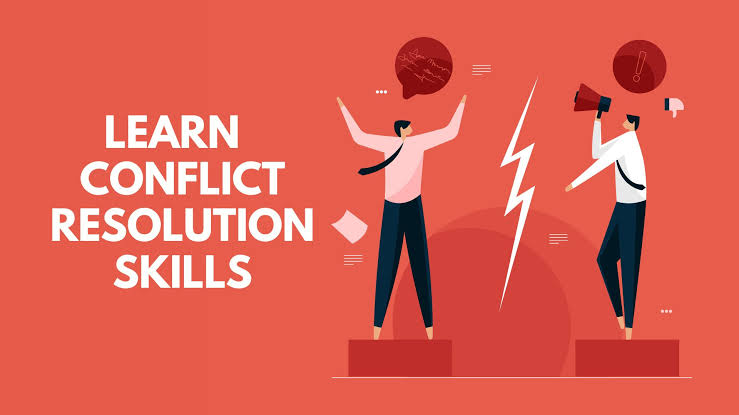Conflict is an inevitable part of both personal and professional life. Whether it arises from differences in values, goals, communication styles, or misunderstandings, conflict in itself is not always negative. When handled effectively, it can lead to growth, stronger relationships, and innovation. However, unresolved or mismanaged conflict often results in stress, low morale, reduced productivity, and damaged relationships.
Effective conflict resolution techniques are not about avoiding disagreement, but about learning how to manage it constructively. Leaders, managers, and team members alike must develop the emotional intelligence, communication skills, and strategic mindset needed to transform tension into progress.
Recognizing the Types of Conflict
Before choosing a strategy, it’s important to understand the type of conflict at hand. Common categories include:
- Interpersonal conflict – Disagreements between individuals due to personality differences or miscommunication.
- Intragroup conflict – Tensions within a team or department, often linked to differing roles or competition.
- Intergroup conflict – Disputes between different teams or departments within an organization.
- Task-based conflict – Differences in opinions over how to approach or complete a job.
By correctly identifying the type of conflict, you can tailor your resolution strategy to the specific dynamics at play, increasing the chances of a positive outcome.
Active Listening and Empathy
One of the foundational techniques in resolving conflict is active listening—fully concentrating, understanding, and responding thoughtfully to what the other person is saying. This goes beyond simply hearing words; it requires setting aside assumptions and judgments.
Empathy complements listening by allowing you to step into the other person’s shoes. When individuals feel genuinely heard and understood, they’re more likely to de-escalate and collaborate. Effective ways to show active listening include:
- Maintaining eye contact
- Nodding and using verbal affirmations
- Paraphrasing what’s been said to confirm understanding
- Asking clarifying questions
Empathy helps reduce defensiveness, opening the door to solutions that respect everyone’s perspective.
Use of the “I” Statement
When tensions are high, accusations and blame can escalate conflict. Using “I” statements instead of “you” statements encourages non-defensive communication. It helps you express how you feel without making the other person feel attacked.
For example, instead of saying, “You never listen to my ideas,” you might say, “I feel frustrated when my ideas are overlooked.” This subtle shift in language creates a more respectful and constructive tone that invites dialogue instead of division.
This technique is widely used in conflict resolution training and has proven especially effective in workplace and relationship settings where long-term cooperation is essential.
Collaborative Problem Solving
Rather than aiming to “win” an argument, effective conflict resolution focuses on collaboration—working together to find a mutually beneficial solution. This approach is also known as the win-win strategy, and it requires openness, compromise, and creativity.
The process typically involves:
- Identifying the root cause of the conflict
- Allowing each party to share their perspective without interruption
- Brainstorming possible solutions together
- Evaluating options fairly
- Agreeing on a path forward and defining next steps
Collaborative problem-solving builds trust, accountability, and long-term success. In 2025, it’s increasingly embraced in agile teams and flat organizational structures where decision-making is shared.
Staying Calm and Emotionally Grounded
When emotions run high, rational thinking often takes a back seat. One of the most effective strategies is to take a pause and regulate your emotions before engaging in conflict resolution.
This might involve:
- Deep breathing or mindfulness techniques
- Stepping away from the situation momentarily
- Journaling thoughts before expressing them
- Practicing grounding exercises
Being calm doesn’t mean being passive—it means responding thoughtfully rather than reacting impulsively. Leaders and mediators who remain emotionally grounded during conflict model the kind of behavior that invites resolution and respect.
Establishing Clear Boundaries
In situations where conflicts become toxic or repetitive, it’s essential to set boundaries. This includes deciding what is acceptable behavior and what is not, and communicating those boundaries firmly but respectfully.
For example, if a colleague repeatedly raises their voice in disagreement, it’s appropriate to say, “I’m willing to continue this conversation, but not if we’re yelling.” Boundaries protect emotional well-being and create a space where resolution becomes possible.
In remote work environments, boundaries also apply to communication times, channels, and tone, all of which should be respected to avoid unnecessary conflict.
Mediation and Third-Party Involvement
Sometimes, conflicts can’t be resolved directly between the involved parties. In such cases, involving a neutral third party can be extremely effective. This might be a manager, HR professional, coach, or external mediator.
A mediator helps facilitate dialogue, maintain neutrality, and guide both parties toward a fair and sustainable resolution. They ensure that discussions remain productive, emotions are acknowledged, and agreements are clear.
In 2025, many organizations now invest in conflict resolution training and internal mediation programs to support healthier work cultures and reduce the impact of prolonged disputes.
Follow-Up and Accountability
Resolving conflict doesn’t end with an agreement. Following up is critical to ensure that the resolution is working and that both parties are honoring their commitments. Regular check-ins help prevent the issue from resurfacing and allow space for continued improvement in communication.
Leaders should schedule follow-ups and invite honest feedback, reinforcing that the goal is long-term trust, not just a quick fix. Keeping everyone accountable builds a culture of transparency and responsibility.
Conflict Resolution Strategies at a Glance
To summarize the most effective conflict resolution techniques:
- Practice active listening and empathy
- Use “I” statements to express concerns
- Focus on collaborative problem-solving
- Regulate your emotions before reacting
- Set healthy boundaries and standards
- Bring in a mediator when needed
- Follow up and maintain accountability
These strategies are simple in concept but powerful in practice, especially when applied consistently and with sincerity.
Conclusion
Conflict is not a problem—it’s an opportunity. When approached with intention and skill, conflict can lead to better communication, stronger relationships, and greater personal and professional growth.
By incorporating a range of conflict resolution strategies—from emotional regulation to collaborative dialogue—individuals and teams can transform disagreement into constructive dialogue. In the evolving landscape of 2025, where empathy, diversity, and agility are key, mastering conflict resolution is not just useful—it’s essential.



